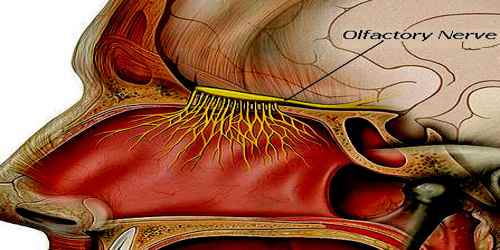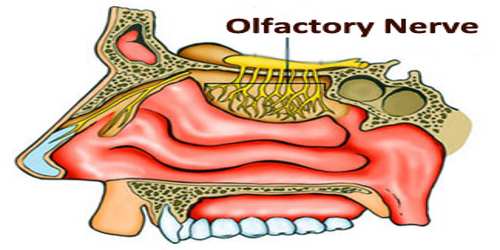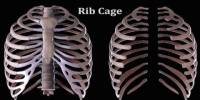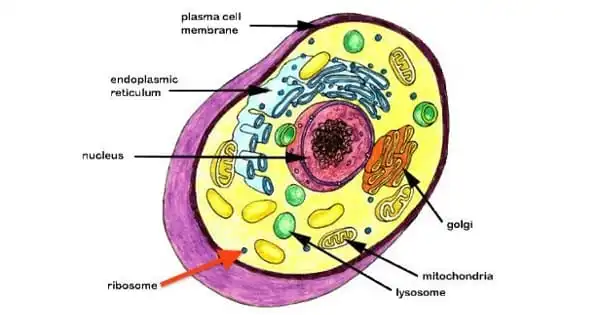Olfactory Nerve
Definition
Olfactory nerve is the first pair of cranial nerves that carries sensory information relating to smell from the nose to the brain. It is typically considered the first cranial nerve, or simply CN I. It is the shortest of the cranial nerves and passes from its receptors in the nasal mucosa to the forebrain. It enters the skull through the cribriform plate of the ethmoid bone. It is the shortest cranial nerve and is the only cranial nerve with one trunk instead of two. The olfactory nerve does not join up with the brainstem like most of the other 12 cranial nerves. Damage to the olfactory nerve can cause a loss of the sense of smell.

Derived from the embryonic nasal placode, the olfactory nerve is somewhat unusual among cranial nerves because it is capable of some regeneration if damaged. The olfactory nerve is sensory in nature and originates on the olfactory mucosa in the upper part of the nasal cavity. From the olfactory mucosa, the nerve (actually many small nerve fascicles) travels up through the cribriform plate of the ethmoid bone to reach the surface of the brain.
The sense of smell can be altered due to a variety of conditions referred to as hyperosmia, hypoosmia, anosmia, and dysosmia. However, the most common pathology to affect the olfactory nerve is the common cold. Caudally, the olfactory nerve roots are located superior to the origin of the optic nerve and the anterior cerebral artery.
Structure and Functions of Olfactory Nerve
The Olfactory Nerve is the first of the Twelve Cranial Nerves. It consists of both afferent and efferent sensory fibers. The word Afferent means toward the centre, as in from a peripheral area of a limb to the central nervous system. The word Efferent is the opposite of Afferent, meaning away from the centre and toward the periphery which is when the stimulus is carried back to the brain from a peripheral area.
The olfactory nerves consist of a collection of many sensory nerve fibers that extend from the olfactory epithelium to the olfactory bulb, passing through the many openings of the cribriform plate, a sieve-like structure of the ethmoid bone. The nerve’s olfactory receptors are located within the mucosa of the nasal cavity. Unlike many other nerves, CN1 does not possess two trunks. Rather, its sensory fibers extend through the ethmoid bone’s cribriform plate, a part of the skull located behind the nose. Once airborne chemicals and particles enter the nasal cavity, they interact with these neural receptors.

The Primary Efferent Nerve Fibre stems from the Anterior Commissure of the Corpus Callosum. It passes through the Olfactory Tract. It synapses in the Contralateral Olfactory Bulb on an Inner Nuclear cell. These cells are excited by Mitral cells and inhibited by Tuft cells, upon which the Inner Nuclear cell’s fibers attach.
The Mitral and Tuft cell’s fibers then continue on to synapse with Olfactory nerve fibers in the Olfactory Glomerulus. The Olfactory Nerve Fibers converge into bundles and treponate first the Dura Mater and then the Cribriform plate (The Olfactory Nerve Exits the skull through the Cribriform Plate).
They surpass the Submucosa and terminate on the Olfactory Mucosa (Stratified Squamous Non-keratinizing Epithelium) as Olfactory Cells, in the roof of the Nasal Cavity.
CN1 is the shortest cranial nerve within the human head. It can be susceptible to lesions created by blunt trauma damage, which can result from complications of frontal brain lobe tumors, meningitis, and a few other factors. This will lead to a reduced or absent sense of smell. However, even if CN1 is damaged, nasal pain will still be transmitted via the trigeminal nerve. The functional components of the olfactory nerve include SVA, special visceral afferent, which carries the modality of smell.
Reference:
















